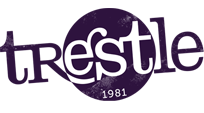Speech, Language, and Communication (SLCN) in focus with Charlotte Wood
Hello, I'm Charlotte Wood, a Consultant Speech & Language Therapist, and I've had the privilege of being part of the Create, Speak, Thrive: Bringing Words to Life Project for the past year. In this blog, I'll talk you through the world of Speech, Language, and Communication Needs (SLCN) and share my personal reflections on our project's first year. I'll also shed light on the project's ambitious goal of enriching teachers with the magic of drama and storytelling. So, join me as we explore the power of communication and creativity.
Why do some children have Speech, Language, and Communication Needs?
Imagine a child's communication journey as a series of adventures. Some children face Speech, Language, and Communication Needs (SLCN) because they've encountered barriers along the way. These barriers can be likened to locked doors on their path to effective communication.
In some cases, barriers exist because children miss out on opportunities for rich and inclusive communication experiences. In others, it's because they have unique learning paths, and traditional approaches don't always fit their individual maps.
The Significance of SLCN
School children often find themselves in inaccessible communication environments. This can limit their academic progress and can lead to feelings of inadequacy and low self-esteem. Communication differences can make children feel frustrated and confused, leading to difficulties in forming friendships, taking part in learning, and socialising.
“Did you know that about 10% of children experience long-term speech, language, and communication barriers? About 2-3 children in every classroom have Speech, Language, and Communication Needs but the numbers can be as high as 50% in some classrooms.”
The Impact of the Pandemic
The COVID-19 pandemic presented unprecedented challenges. The Royal College of Speech and Language Therapists reported many opportunities to identify children with communication and language delays were missed because of restricted access to educational and health services during national lockdowns. The Education Endowment Foundation reported teachers have found their pupils require more support with communication than ever before. Lockdowns and remote learning made it even more apparent that effective communication skills are a fundamental aspect of education.
Create, Speak, Thrive's Unique Approach
Create, Speak, Thrive isn't just about acknowledging these challenges; it's about proactively addressing them through a unique blend of drama, creativity, and adaptions to the communication environment.
My Role in Create, Speak, Thrive
As an appointed SLCN specialist, my role was twofold: to provide expertise in SLCN and to facilitate the integration of drama and storytelling into neuro-inclusive approaches. The aim of these approaches are to empower children and reduce inequalities in their communication environments. Here's an insight into what I've been up to in Year 1:
Continuing Professional Development (CPDL): I offered CPDL sessions, both online and in-person, covering a range of topics, including communication skills development, SLCN prevalence, and identification.
School Visits: I visited schools to advocate for children with SLCN, shedding light on enabling and limiting experiences.
Collaborative Insights: I provided professional insights and analysis in steering group meetings, fostering knowledge exchange between head teachers, teachers and artists.
Reasons to be cheerful
One of the project's central aims is to empower teachers with creative approaches. In Year 1, I saw the remarkable impact of this approach:
The project permitted space for creativity, imagination, and playfulness among children.
Teachers and artists became partners in education, sharing techniques and strategies. For instance, the use of symbol communication and visual timetables became more widely adopted.
Multi-modal and multi-sensory methods supported children's word learning and retrieval skills.
Artists demonstrated how props could support engagement, making lessons more interactive and enjoyable.
Ongoing dialogues between artists and teacher-researchers led to a better understanding of children's SLCN, ensuring that no child was left behind.
Barriers and Questions
Despite these achievements, I identified certain barriers:
The majority of the interactions between the adults and children relied heavily on spoken language, making it challenging for children with SLCN.
Success criteria occasionally focused solely on spoken responses, potentially affecting the self-esteem of children with SLCN.
Questions arose about whether children with SLCN were truly included or occasionally excluded due to the dominant use of spoken language.
In some instances, disengagement and boredom, stemming from a lack of understanding, were misconstrued as inattentiveness.
What do I hope to achieve in Year 2 of the project?
One of the key pillars of my role is to support the artists, the school’s senior leaders and teacher-researchers. I'm committed to offering Speech and Language Therapy clinical supervision, ensuring they have space for reflective practice, knowledge sharing, and skill development. Helping practitioners understand the interplay between SLCN, mental health, behaviour, and environment will be a priority for me.
What’s next?
I'll be weaving the threads of 'Total Communication'. This approach involves using and accepting multiple forms of communication, such as symbols, objects, gestures, drawings and more.
Environmental adaptations will be explored as a means to aid comprehension, memory, and language comprehension.
SLCN tools and screeners will be our trusty sidekicks, helping us identify and address SLCN with precision.
Let's not forget the important voices in this journey – the children themselves. I hope Create, Speak, Thrive unlocks their life stories, experiences, views, and full potential.
Please stay with us on this exciting journey, breaking down barriers, empowering children with SLCN, and exploring the potential of creativity in schools.











